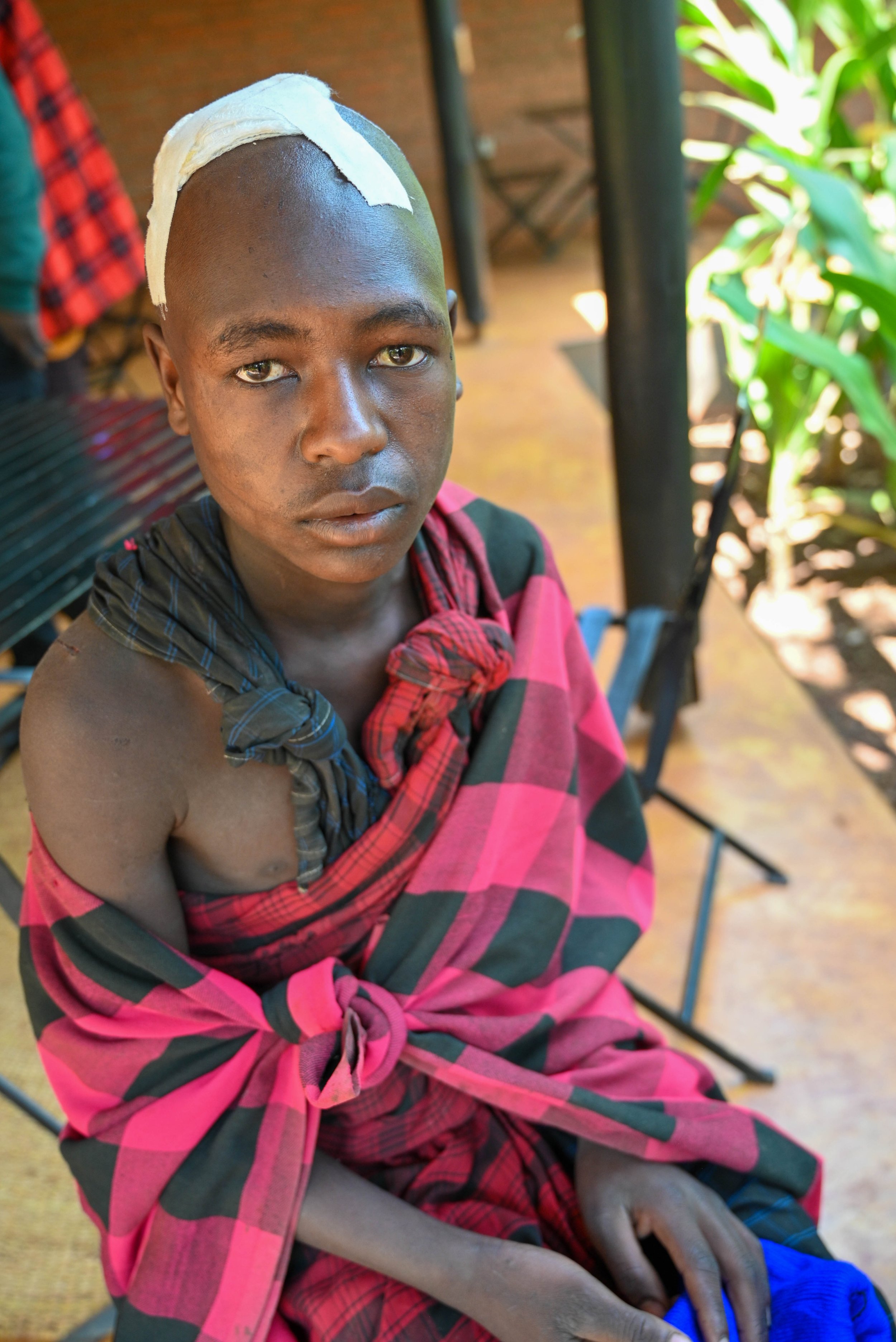Human-Wildlife Conflict: The Leopards of the Serengeti
Legishon showing his head injuries.
One of the Leopards of the Serengeti as photographed by FAME’s Board Chair, Dr. Michael Rubenstein.
17-year-old Legishon* lives with his brother-in-law and two male cousins, 75 miles from home. The drought in the Serengeti has led to an acute shortage of water and has dried up the pastures for grazing, forcing them to move with their livestock and set up temporary camps elsewhere.
It was a typical day when Legishon took the cattle out. He has been herding cows since he was a little boy, so he could easily handle the big herd by himself. As he ventured deeper into the plains, he suddenly felt something from above jump down onto his shoulder.
“At first I didn’t know what it was, then I quickly realized that it was a leopard,” said Legishon.
Legishon tried to fight off the leopard unsuccessfully. He screamed for help, but sadly no one was around to help him.
“As I lay there with the leopard on my back, tearing at my head and shoulder, I knew I was going to die. I could see my cattle in the distance and knew that they were safe. The herdsmen always said that the leopards seldom kill cows, especially if they had the option of killing humans or goats. I prayed that this was the case. At sunset, my cousins would come looking for me when I didn’t go back to the camp, and they would find the cattle. This was my last thought before I closed my eyes and waited to die.”
However, after a few minutes of the attack, the leopard walked away. Legishon was left in terrible pain, unable to talk or move. He lay bleeding where the leopard had left him until some women picking firewood found him.
“At first, they thought I was dead, and when they realized I wasn’t, one of the women who knew my family called my brother-in-law.”
Legishon’s brother-in-law knew of a local dispensary that had an ambulance. He called them and asked for help. The ambulance arrived at the scene and took Legishon to the dispensary.
“When we got to the dispensary, the doctor said that Legishon needed way more sophisticated medical care than they were able to provide. They mentioned that he needed a CT scan, and this was only available at FAME.” - Legishon’s Brother-In-law.
Once at FAME, the emergency response team knew exactly how to help Legishon, having treated numerous injuries from wild animal encounters over the years.
“I was very scared. I’m not scared often; actually, I’m never scared of anything, but that day I was scared that we would lose Legishon”
Legishon went for an X-ray and CT scan, which confirmed that he had not suffered any neurological damage from the attack. He was given tetanus and rabies vaccine. After four days in FAME’s inpatient ward, he was ready to return home.
“Thank you, FAME. Your good hospital has healed me. I’m ready to go back to my cattle!”
“As a family, we are very grateful to FAME. You saved our son! I’m now taking him home to his mother, who I’m sure will not allow him to come back to the camp. When I told her of his accident, she was hysterical. Now she wants him home so that she can watch him all the time. But Legishon is a man, and you can’t watch a man. He’ll be back with the cattle soon enough, I’m sure!”
- Legishon’s Brother-In-Law
*While the patient’s name has been changed to protect privacy, permission was secured to share her photos and story with FAME supporters, and to raise awareness of available medical care at FAME Medical


